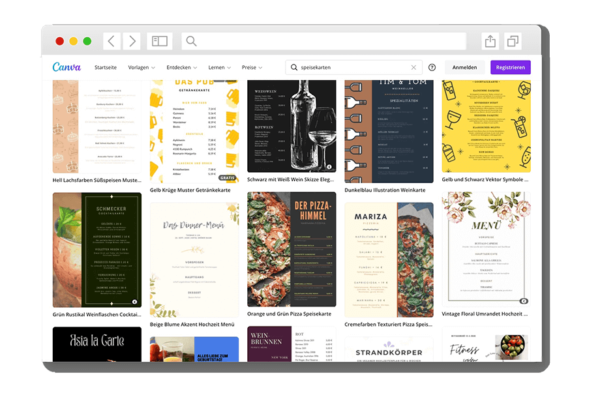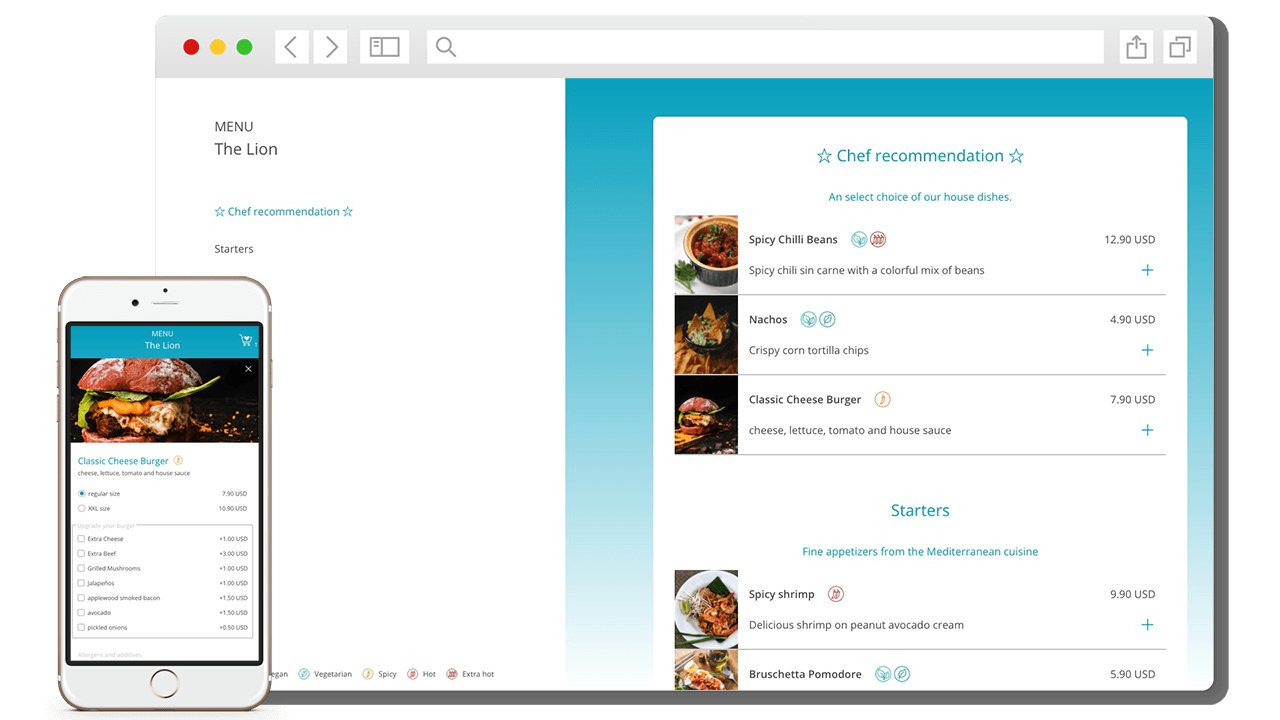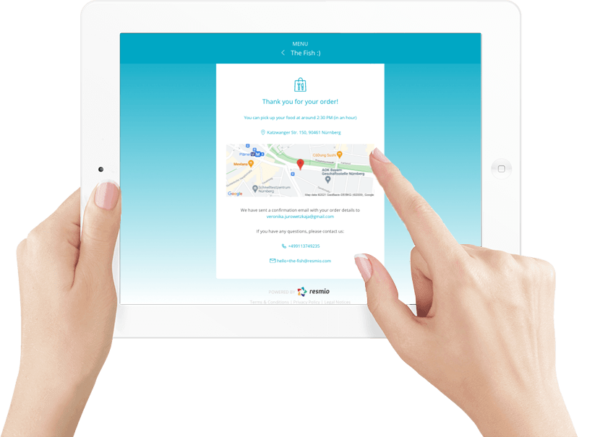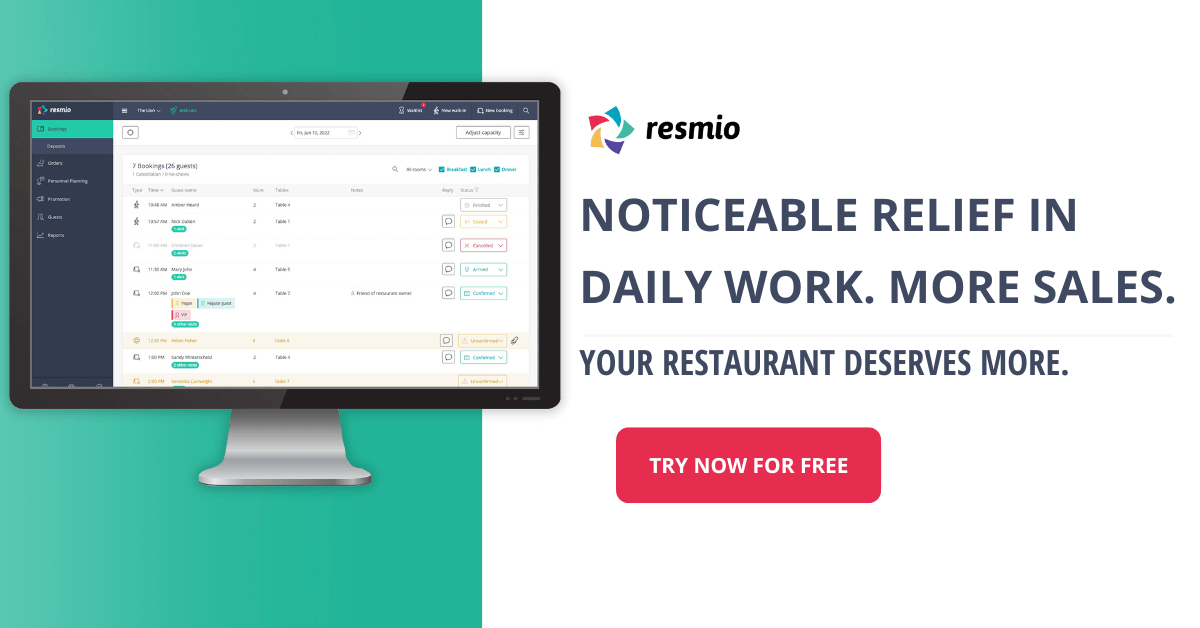The restaurant menu is what you call your restaurant’s business card. It is a powerful marketing tool to attract guests and lead them to your venue. Therefore, owners should pay a high attention to a good food menu. Creating a menu requires careful planning. What needs to be considered in the design? How do you achieve higher turnover through marketing? We sketch out step by step how you can create your perfect restaurant menu.
Creating a restaurant menu – which types are there?
The classic menu is divided into different food sections. At the back of the menu is usually the list of beverages.
Basically, the menu contains the following elements:
- Daily/weekly menu (contains all changing dishes).
- Seasonal menu (contains seasonal dishes such as asparagus cream soup)
- Menu card (contains all dishes on offer)
- Additional cards (contains, for example, an ice cream or dessert menu)
3 simple steps to a profitable menu
Creating a profitable menu can be more challenging than you think. You can put your foot in it and it can end up being expensive and annoying. In order to ensure that your restaurant is provided with an ideal menu, you need to pay attention to three main steps:
- Layout
- Design
- Pricing
1# Layout
An important step in creating the menu is the layout.
First of all, think about which dishes you would like to offer. As a rule, more dishes mean more effort in purchasing and preparation. Compromises in the quality of the food are a possible consequence – and as a restaurant owner you can’t want that! By the way, an oversized menu raises doubts in the guest’s mind about the freshness of the goods. Menus with perhaps five or six main courses are usually an indication that your restaurant does not use frozen food. This means that your dining options appear to be of a higher value – and hopefully they are, based on the above-mentioned key points.
Then you have to think about a suitable arrangement of the respective dishes. The division into the main categories of starters, main courses, desserts and drinks has proven to be a good idea.
You also have to decide whether you want to offer a main card and also a …
- … daily menu or weekly menu
- … seasonal menu
- … dessert menu
There is no general ideal solution here. On the one hand, the type of menu(s) is a matter of taste, and on the other hand, it depends on the dishes offered. For example, a rotating menu at an Italian restaurant is rather unusual because of the constant nature of the dishes, whereas a daily menu is a widespread standard for regional German cuisine.

2# Classic or modern design?
The design is perhaps the most important part of the menu. The lowest prices and a wide variety of dishes can quickly be overshadowed by an unattractive menu.
Whether you should choose a classic or modern design depends largely on your catering business. Furthermore, the menu card should be resistant to dirt and moisture as well as durable so that you can clean the card easily.
You can create the cover for the menu yourself, for example with an online tool such as Canva, which provides you with various templates. For a more individual design, you can of course outsource the design to a professional graphic designer. However, this option is more expensive.
When printing the cards, don’t turn over every penny twice. It’s also better to use higher quality paper and a higher print quality to save yourself double the work.
You can place your order with your local printer or online. As a rule, online printing services are cheaper, but you will generally get better advice on site and can start with a “test print”.
3# Pricing matters
Pricing is an essential factor for the success of a restaurant. If prices are too low, you will not make a profit; if they are too high, you may lose many customers.
So how do you get the best possible pricing? The safest way to find profitable prices for your dishes is to carry out a cost and price calculation. In this context, a comprehensive menu analysis using the Star, Plowhorses, Puzzles, and Dogs approach has proven to be very useful. This allows you to identify, among other things, high-margin dishes that can contribute significantly to profits through sales promotion measures.
In addition, you can base your pricing on …
- … your competitors
- … the income ratios at the location.
Of course, factors such as the quality of the food and the type of your restaurant business also play a decisive role in pricing. However, the marking of prices itself also has an influence on the profitability of your menu.
Here are some practical tips:
- When creating your menu, avoid continuous price sorting from “cheap to expensive” and vice versa, this only leads to a focus on the price. If you mix expensive dishes with inexpensive ones, it makes price comparison more difficult. The focus shifts back to the offer.
- You can achieve a similar effect by not using currency signs. Instead of 9.90 EUR or 9.90 €, just put 9.90. But don’t forget to indicate the currency elsewhere in your price list, for example in the footer with the note “All prices in euros”.
- Psychological tricks such as the so-called “anchor effect” help to drive up the order rate for profitable dishes. By listing expensive dishes first on your menu, the cheaper dishes below will seem even cheaper – and are more likely to be ordered!
How to write a restaurant menu – Watch out for typos!
If you are writing a menu for the first time, make sure that your menu does not contain any spelling mistakes or number errors in prices. Both look unprofessional, make guests uncomfortable, embarrass your staff and ultimately cost you money.
Therefore, have one or more people proofread your card thoroughly for errors before printing. A proper check can save time-consuming corrections afterwards!
Nevertheless, typos can never be completely ruled out. Changes are much easier with the online menu, as there are no costs for reprinting – but more on that later.

Create a digital menu – Everything you need to know!
Nowadays it is also possible to use a digital menu in your restaurant.
The benefits of this are …
- … changes to the menu are possible around the clock and can be seen immediately by others.
- … simple declaration of mandatory ingredients
- … direct ordering and payment via smartphone (e.g. at the table via self-ordering)
- … marketing via website, Google and social channels
- … greater convenience for guests
COVID 19 and the subsequent consequences in terms of spacing rules and hygiene regulations have shaken up the restaurant industry. The safety of employees and guests is a top priority. A digital menu with ordering capability supports you in this regard: for example, because you can quickly adjust the products in your digital menu without having to print new menu cards straight away.

What do you need for a digital menu?
To use a digital menu in a restaurant, all your guests need is a smartphone so they can order food online. Another advantage is that the process is contactless and protects both guests and staff from potential infection.
How to create a digital menu?
A digital menu can be created in just a few minutes. Using appropriate software, you can easily create the menu with the corresponding dishes and drinks online and then modify it at any time. As usual, you can divide your menu into various categories (e.g. starters, main courses, desserts, drinks, etc.), add sales-promoting captions and include images. Even combinations such as additional bookable side dishes are possible.
Once you are happy with your online menu, all you have to do is publish it, for example on your restaurant website, Facebook, Instagram and Google My Business.

Summary – Checklist for creating a restaurant menu
Before you can put your menu on paper, you must …
- … decide on the layout of your menu (daily menu, weekly menu, dessert menu, etc.)
- … calculate the prices of the dishes and drinks
- … label all allergens and relevant ingredients.
Then you can decide on a suitable cover. The menu should match the type of restaurant and be of sufficient quality to withstand prolonged use.
You can design the menu yourself using tools such as Canva, which offers a variety of templates, or you can hire a professional graphic designer to do the job for you.
Another option is to introduce a digital menu in your restaurant. All your guests need is a smartphone and a stable internet connection. You can also embed the digital menu exclusively on your website and use a standard menu card in the restaurant. This allows your guests to check out your menu in advance.


